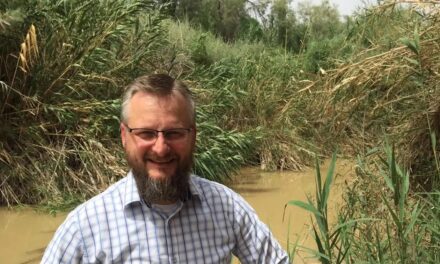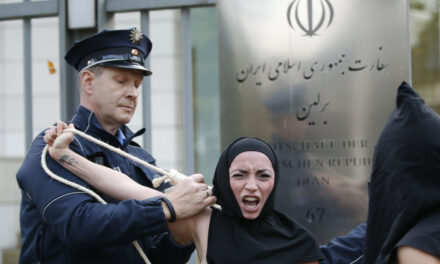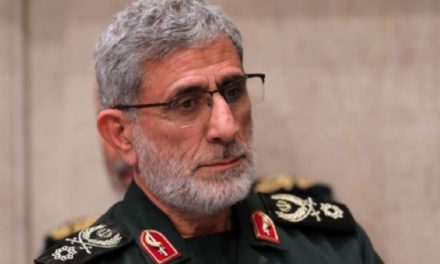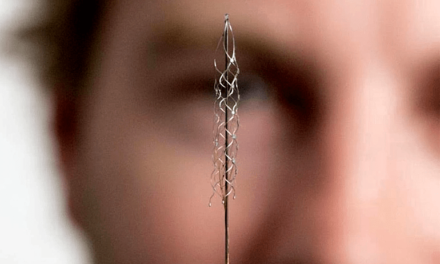For about four years, the Iraqi arena has witnessed the announcement of many shadow militias loyal to Iran with new names, claiming responsibility for attacks targeting military bases and American interests in Iraq and Syria.
Among these militias that began announcing themselves in 2020, specifically after the killing of Qassem Soleimani, commander of the Iranian “Quds Force” and Mahdi al-Muhandis, Chief of Staff of the Popular Mobilization Authority. “Osabat al-Thaereen, Awliya al-Dam, al-Ghashiyah, Ashab al-Kahf, Qabdat al-Huda, Qassem al-Jabbarin, Dhul-Fiqar, Saraya al-Muntaqim, Thaer al-Muhandis, Liwa Khaybar, Saraya Thawrat al-Thaniya, International Resistance, Martyr Karim Dar’am, Battalion of the Predecessors, Ulul Azm, al-Muntaqimun, Alwiyat al-Waad al-Haq, al-Thaeerun, Ruba Allah, Weld al-Shaib, Sons of al-Muhandis”, these militias were formed at the end of 2017, as part of a project directly supervised by Soleimani in coordination with Al-Muhandis, and represented the first nucleus for the formation of an air-space force, consisting of a selected group of Iraqi militia fighters affiliated with the Popular Mobilization Authority.
According to information obtained by “Irfaa Sawtak” from special security and political sources, the launch of the establishment of these militias was by selecting a group of 100 Iraqi fighters, who were sent in two batches to Iran, with the aim of undergoing intensive training on carrying out missile attacks and drone attacks, and manufacturing and assembling missiles and drones.
Each batch continued its training for about six months, as the training was conducted in camps affiliated with the “Ramadan” headquarters, which is one of the branches of the “Quds Force”, responsible for Iraq in the Corps, and officers from the air-space force in the Iranian Revolutionary Guard supervised these trainings.
Upon the return of the two batches to their country, their members trained new groups inside Iraq, selected from among hundreds of militants in the pro-Iranian militias, under the supervision of a body composed of Quds Force officers and trainers from the Lebanese Hezbollah who specialize in missiles and drones in militia bases spread across various Iraqi regions, such as the town of Jurf al-Sakhar, north of Babil Governorate.
The next step was the formation of new small militias (from the trainees) equipped by Iran with missiles, drones, and spare parts, ready to carry out any attack requested of them in Iraq.
Each militia is led, in addition to an Iraqi leader from the main militias, by a team of Iranian advisors, most of whom are officers in the Quds Force and the Iranian Revolutionary Guard Corps.
Objectives and Tasks
Political expert Omar Abdul Sattar says that the primary role of these militias is to wage proxy wars on behalf of Iran, explaining to “Irfaa Sawtak”: “Proxy wars are less costly financially and humanly for the sponsor (Iran), and the agent usually achieves the sponsor’s goals better than the sponsor himself due to his knowledge of the local context, language and land, but the agent must not be directly involved in violations and bear responsibility.”
He adds that according to the principle of agency, each agent has a sponsor; agents are often militias, parties, security companies and others, while the sponsor is often a state or group of states.
The agent himself can rely on a smaller agent to carry out a task, as happens with small groups such as “Khalaya Al Katyusha” according to Abdul Sattar.
He continues: “Agency for these militias means that the power is for the sponsor, and the sponsor here is Iran, as it represents an international actor that wants to achieve its goals indirectly, but the relationship between the sponsor and the agent is often secret and rarely public as in Iraq.”
Perhaps the main goal of forming these small militias, each of which has between 300 and 500 militants, is to be a major part of the Quds Force’s arms, which it uses to consolidate Iran’s military and security presence in Iraq, Syria, Lebanon, and Yemen.
At the same time, the shadow militias represent the main militias after the latter officially entered the political process during the 2018 parliamentary elections in Iraq, because their direct involvement in any attacks against American and Western interests or any other international interests in Iraq after that date would have caused a diplomatic crisis for the Iraqi government.
Therefore, the Revolutionary Guards created new faces for them to carry out these attacks on their behalf, and the shadow militias became a major part of the deception strategy practiced by the militias loyal to Iran to maintain their presence.
A means of circumvention
In the same context, Shaho Qardaghi, a political analyst at the Raman Center for Research and Consulting, considers the use of pseudonyms and subtitles by pro-Iranian militias as “a means of circumventing international and local pressures, and to maintain their operational flexibility.”
He rules out the possibility that the militias will succeed in hiding their fingerprints on operations in this way, explaining to “Irfaa Sawtak” that “the accuracy of the American responses targeting leaders in these factions means that America, with the means it possesses, can uncover the main perpetrator and hold him accountable, and it cannot be easily misled through these tactics.”
After the October 7, 2023 attack carried out by the Palestinian Hamas movement on towns in southern Israel, which led to the latter launching a military operation in the Gaza Strip that is still ongoing, Iraqi militias carried out attacks against American bases in Iraq and Syria under the name of the “Islamic Resistance in Iraq.”
For its part, the Washington Institute for Near East Policy considers that “Islamic Resistance in Iraq” is a comprehensive term to describe the operations of all Iranian-backed militias in Iraq.
It said in a report that this term represents “an extension of the front strategy that Iran and its proxies have been using since 2019 to avoid accountability for attacks against Americans.”





